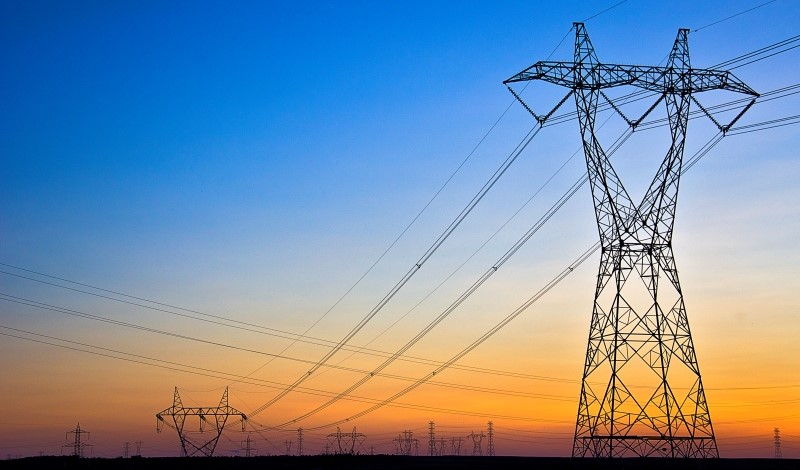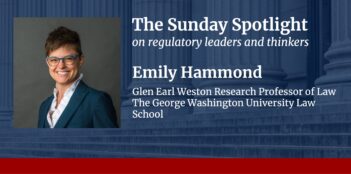
Renewable energy in the United States has declined in cost, but electricity transmission remains a challenge.
Over the past decade, the cost of producing solar power has been cut almost in half. Wind energy costs, too, have dropped by 75 percent, and the cost of producing renewable energy has declined dramatically. Although this bodes well for a sustainable future, the difficulties lie in the details: transmitting the energy from the source to the user.
To capitalize on all of this cheaper, renewable energy, the United States desperately needs better transmission infrastructure, explain Lucas Davis, a professor at the University of California–Berkeley, Catherine Hausman, a professor at the University of Michigan, Ann Arbor, and Nancy Rose, a professor at the Massachusetts Institute of Technology in a forthcoming article in the Journal of Economic Perspectives.
The authors propose a set of solutions that could hasten the approval of new transmission projects via enhanced federal authority and make better use of existing facilities through equipment upgrades.
Transmission is the “high-voltage, large-volume transportation of electricity over medium- to long-distances.” Efficient transmission is crucial in the renewable energy context because of the uneven geographic distribution of different renewable energy sources.
Even within more populous states, the key locations for generation are often far from concentrated populations, which makes energy transmission important, the Davis team explains.
By contrast, conventional energy generation plants—deriving energy from coal and gas—can be built close to population centers and import fuel directly to these plants.
As the costs of renewable power generation have declined, renewable electricity transmission has grown in importance. Although transmission capacity in the United States grew by 27 percent between 2005 and 2020, the United States is still falling short, the authors argue, because transmission capacity is not evenly spread enough to adequately serve demand.
Davis and his coauthors show that curtailment rates—the intentional reduction of energy production when quantity supplied exceeds quantity demanded—have increased in recent years. Davis, Hausman, and Rose also explain that wholesale electricity prices in markets with renewable energy generation often dip below zero, implying that the quantity supplied in these markets frequently exceeds quantity demanded.
With improved transmission capabilities, renewable energy developers could sell their extra power to other locations when their local market is at capacity, reducing the need for curtailment while keeping wholesale prices above zero, the Davis team argues. This approach could help correct supply and demand mismatches, they explain.
Davis and his coauthors, however, identify a number of challenges to large-scale transmission development in the United States.
Rather than being a single entity, the United States electricity grid is made up of a decentralized set of local utilities, each with a monopoly over its area. The utilities are overseen by regional organizations responsible for managing the electricity flows in the area. The United States has more than 50 of these regional balancing authorities.
While the local utilities trade electricity among themselves and within organized wholesale markets, the balancing authorities oversee the markets and enforce rules from the U.S. Federal Energy Regulatory Commission. The country is further divided into three large “interconnections,” between which electricity essentially cannot be transmitted.
The authors explain, however, that balancing authorities tend to focus on ensuring reliability, not expanding transmission capacity.
The decentralization of the electricity grid creates incentives for utilities and electricity sellers to avoid cooperation, the authors argue. Moving energy from a low-priced area to a high-priced area creates benefits for those on the receiving end by expanding supply and lowering prices. As the Davis team argues, electricity sellers in the receiving area will oppose this movement, because lower prices translate to lower profits. Regulated utilities, which hold local monopolies, do not have strong incentives to push for this and lower prices for their customers, as they face no competition.
In addition, renewable energy transmission development is faced with regulatory challenges.
Before building a long-distance transmission project, developers must secure approval from federal and state authorities. Federal laws, such as the Clean Water Act, Endangered Species Act, and National Historic Preservation Act, may all apply. Projects that cross federal land must satisfy National Environmental Policy Act requirements. These laws add layers of complexity, Davis, Hausman, and Rose contend.
Local opposition to energy projects also poses political challenges, Davis and his coauthors note. They cite successful local campaigns that rejected transmission lines in Maine and New Hampshire.
These opponents often focus on site preservation and negative visual effects of renewable energy sources, among other concerns. Although the benefits of transmission lines are broadly distributed, land use complaints are usually concentrated within local communities.
With these challenges in mind, Davis and his coauthors turn to possible solutions.
They first consider the prospect of enhancing federal authority. First, some solutions have already been proposed by U.S. Senator Chuck Schumer (D-N.Y.) and U.S. Senator Joe Manchin (D-W. Va.). They suggest simplifying National Environmental Policy Act procedures and streamlining multi-agency coordination.
Second, the Bipartisan Infrastructure Law of 2021 and the Inflation Reduction Act of 2022 gave the Federal Energy Regulatory Commission the power to approve transmission projects over state objections. But Davis, Hausman, and Rose point out that the exercise of this authority could draw challenges from state regulators.
The Davis team also identifies some ways to enhance transmission without building new lines.
For example, projects could focus on upgrading to high-voltage lines in existing transmission projects, which would help avoid the need to obtain permits for new projects.
In addition, further investment in battery storage facilities by public utilities could offset the immediate need for transmission lines.
Finally, increased U.S. government support for research and development of these technologies could reduce costs and improve efficiency.
The dramatic decline in the cost of wind and solar power generation is a positive sign for a net zero carbon future, Davis, Hausman, and Rose note. Electricity transmission, however, is also a key component of the electricity supply chain. As Davis and his coauthors argue, legislation and further investment will be imperative if the United States is to take full advantage of its increasingly abundant supply of clean energy.



